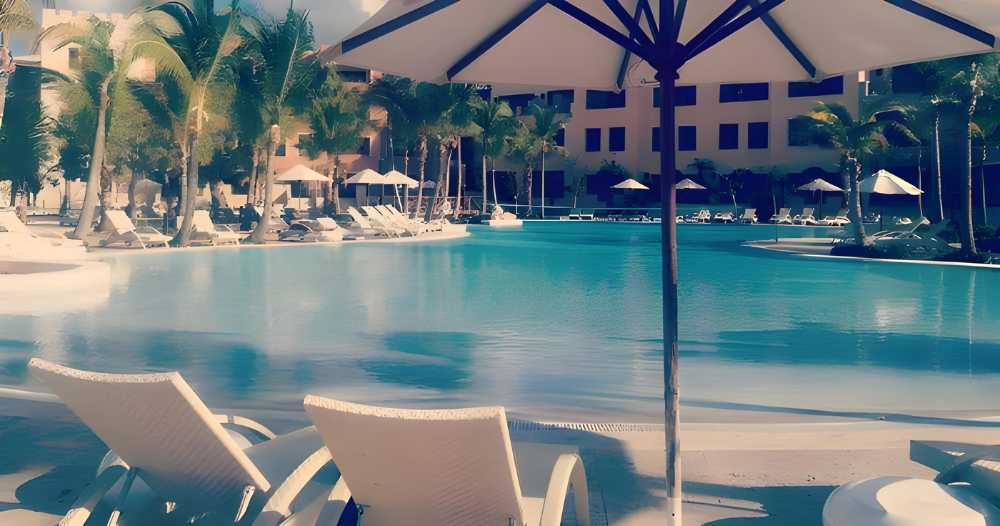If you are thinking about moving to Punta Cana, you'll be pleased to know that it is a place where you can enjoy a high quality of life without spending a fortune. Let's explore the cost of living in Punta Cana in detail, covering all aspects of the cost in this Caribbean paradise and comparing it to other destinations in the region.
Welcome to Punta Cana
Punta Cana, located in the Dominican Republic, is known for its white sand beaches, crystal-clear waters, and a relaxed atmosphere. But there is much more to discover, especially if you are considering living here. As someone who has lived in several places in the Caribbean, I can confidently say that Punta Cana offers a unique combination of affordability, quality of life, and international connections, which is personally important to me. There are many beautiful places in the Caribbean, like Punta Cana, but getting there can be very complicated. Therefore, traveling outside your paradise or having your family visit is quite a complicated matter.
Housing: Your New Home in Paradise



Renting and Buying Properties
One of the biggest expenses you will have to consider is housing. In Punta Cana, you can find a variety of housing options, from modern apartments in condominiums to beachfront houses. For example, renting a one- to two-bedroom apartment in the city center can cost around $500 to $700 per month, while in more exclusive areas like Cap Cana, prices can be higher. And if we talk about villas, prices can easily range from $3,000 to $5,000 per month.
If you are going to rentrent, a very important point to consider is that in the Dominican Republic, it is very common to be asked for two deposits and the month's rent, so if your monthly rent will be $500, you can expect to pay $1,500 before signing the contract and moving into the property.
These two deposits must be returned in full when you leave the property if you have handed it over without any damage requiring repair, in which case the owner will inform you that they will take part of the deposit money to make the necessary repairs and return the rest. I must say that most owners do not like to return that deposit, so I recommend repairing any damage, painting, and delivering the property clean to avoid any extra expenses.
Compared to places like the Riviera Maya in Mexico or the Bahamas, Punta Cana is quite affordable. In these other destinations, you could expect to pay 20-30% more for similar properties.
Buying Properties
Buying property in Punta Cana offers an excellent investment opportunity and unmatched quality of life. Housing options range from modern apartments in condominiums to luxurious beachfront villas.
Additionally, the purchase process is accessible to foreigners, who can benefit from a developed infrastructure. Investing in a property in Punta Cana not only guarantees a paradisiacal retreat but also a solid financial option in a growing real estate market.
Be sure to understand the legal requirements for buying before starting the purchase process to avoid falling victim to real estate fraud. Check out our article on buying real estate in Punta Cana, Dominican Republic, to learn more. Hire professionals and lawyers who can guide you in the best way. Here you can find Law 16-95 Foreign Investment Law..
Advantages of Living in Punta Cana
Punta Cana is not only affordable but also offers excellent infrastructure. From well-stocked supermarkets to modern clinics and hospitals, you will find everything you need for a comfortable life.
As for supermarkets, I recommend La Nacional and Bravo; I have found that they have the freshest vegetables and the best quality meat. There are others, but I won't mention them because, honestly, I have had bad experiences with meat and fresh foods.
Food: Eating Well Without Breaking the Bank
Food Prices and Restaurants
Food is another key aspect of the cost of living. In Punta Cana, basic product prices are reasonable. For example, a liter of milk costs around $1.10, and a loaf of bread is $1.50. Eating out is also affordable; you can enjoy dinner at a mid-range restaurant for about $15 to $20 per person.
In comparison, in places like Puerto Rico or Jamaica, food costs can be 10-15% higher. Additionally, the quality and variety of food in Punta Cana are excellent. From local markets with fresh fruits to gourmet restaurants, there is something for every taste.
The Gastronomic Experience
There are small restaurants visited by locals in Bávaro. They offer a plate of fresh grilled fish with rice and tostones for only $10. The dish of the day is usually the Dominican flag, which includes rice, beans, and meat (either pork or chicken), and typically costs around $7. The atmosphere is usually cozy and authentic, surrounded by many Dominicans, especially at 12 pm, allowing you to experience the Dominican culture even more.
Transportation: Economical and Convenient
Mobility Public and Private Transportation Costs
Transportation in Punta Cana is quite affordable. A taxi ride within the city can cost around $10, while public transport is even cheaper, with bus fares costing less than $1. Comparing this to Cancún in Mexico or Barbados, where transportation costs can be significantly higher, Punta Cana offers a more economical and accessible option. Additionally, the road infrastructure has greatly improved in recent years, making it much easier to get around the city.
Although in my personal experience, there is still much to be desired in terms of public transportation, so if you want to live in Punta Cana, it is best to have a motorcycle or your own car.
Basic Services: Everything You Need for a Comfortable
Life Public Service Costs
Basic services such as electricity, water, and internet are essential for any home. In Punta Cana, you can expect to pay around $100 to $150 per month for these services, depending on your consumption. In comparison, in Aruba or Trinidad and Tobago, costs can be a bit higher due to their greater dependence on imported energy.
The most expensive utility in Punta Cana is electricity, which is approximately four times more expensive than in the rest of the country. In this region, it is common to pay for electricity through top-ups rather than a monthly bill. Depending on your consumption and the appliances you use, the cost can vary. A small family can expect to pay between 2,000 and 3,000 Dominican pesos bi-weekly, which is about $100 monthly just for electricity.
Quality and Reliability
The quality of services in Punta Cana is generally good. Recent investments in infrastructure have improved the reliability of electricity and internet supply, making living here even more comfortable.
Entertainment and Leisure: Fun for All Tastes
Recreational Activity Costs
Punta Cana is famous for its recreational activities, from water sports to nightlife. Costs vary, but in general, you can enjoy a wide variety of activities at reasonable prices. For example, a day of diving can cost around $70, and a night at a club can cost about $30 to $50. The most expensive could be parks or tours, with prices varying from $70 to $150 approximately.
Highlighting Activities
One of the things I like most about Punta Cana is the variety of available activities. Whether you prefer to relax on a quiet beach or seek adrenaline in a ziplining adventure, there is always something to do. One of my favorite experiences was a catamaran excursion, where for $60, we enjoyed a full day of sailing, snorkeling, and tasting Dominican food.
Education and Health: Quality and Accessibility
Education Costs
Education in Punta Cana is of high quality, with several international schools available. Costs can vary, but in general, school fees are reasonable compared to other Caribbean destinations.
Medical Services
Medical services in Punta Cana are excellent. With modern hospitals and well-equipped clinics, you can receive high-quality medical care without spending a fortune. Additionally, many health professionals speak English, making communication easier for expatriates.
In the Dominican Republic, it is advisable to have supplementary insurance or private insurance. Personally, I have used Mapfre Prestige insurance, and it has worked wonderfully, but there are many other options available. It is crucial to research and understands all the benefits, hospitals that accept the insurance, covered medications, etc. Never take anything for granted, as you do not want unpleasant surprises in case you need medical attention. Keep in mind that some insurances are not accepted in all clinics or hospitals, so always check this information before deciding.
Safety: A Safe Place to Live Safety
Index Comparison
Safety is an important concern for any expatriate. Fortunately, Punta Cana is one of the safest places in the Caribbean. With a low crime rate and a strong focus on tourist safety, you can feel safe living here.
My Personal Experience
During my years in Punta Cana, I never felt unsafe. The community is friendly and welcoming, and there is a visible police presence in tourist areas. This, combined with the tranquility of the environment, makes Punta Cana an ideal place to live.
Conclusion: Why Choose Punta Cana?
In summary, Punta Cana offers an excellent quality of life at a reasonable cost. From affordable housing to low food and transportation costs, this Caribbean paradise has much to offer. Additionally, with modern infrastructure, high-quality services, and a safe environment, it is hard to find a better place to live in the Caribbean.
If you are considering a life change, I invite you to explore everything Punta Cana has to offer. I assure you that you will not regret it!











